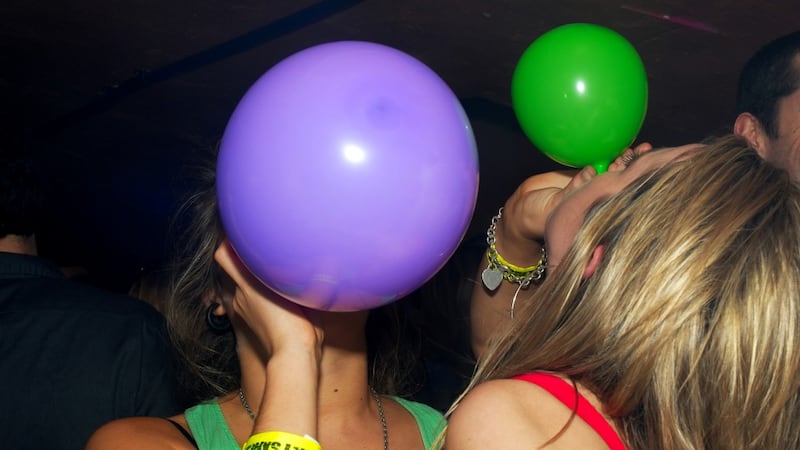Walking in central London recently, I noticed a group of teenagers inhaling the contents of balloons in an alleyway. There was a lot of giggling and high spirits and my initial reaction was that they were inhaling helium from the balloons in order to induce Donald Duck-like speech.
However, I now realise they were inhaling nitrous oxide (N2O) or laughing gas in pursuit of a so-called legal high.
With professional soccer players such as Liverpool’s 20-year-old Raheem Sterling filmed allegedly inhaling laughing gas before briefly losing consciousness, it’s no surprise to read that nitrous oxide abuse is growing in popularity. Research suggests laughing gas was the second most popular drug among young British adults in 2013/14 after cannabis.

A 2006/2007 Irish survey found some 2 per cent of the adult population reported using a solvent or volatile inhalant in the past. Lifetime use was highest among adults aged 15-24 years, at 4.2 per cent.
The drug is used legitimately in the catering industry as a whipping agent, leading to one of its street names – “whippet”.
It is also used in medicine as an anaesthetic and as an anxiolytic during labour, and for dental procedures. A colourless and non-flammable gas, with a slightly sweet taste and smell, nitrous oxide for recreational use is usually bought in pressurised canisters before being used to inflate balloons to facilitate inhalation.
Carnivals
Nitrous oxide was invented by British scientist Joseph Priestley in the late 1700s. By the 19th century it was hugely popular as a recreational drug, used at carnivals and popularised by medical students at laughing gas parties. Coleridge was a fan, saying the drug gave him a “pleasurable sensation of warmth”. Using balloons to inhale nitrous oxide can be traced to 1970s rock festivals, something that continues today.
The principal “hit” from laughing gas is a short period of euphoria. It can also cause dizziness and may precipitate disordered thinking in the short term.
Concerns around its use include the fact that it displaces oxygen in the bloodstream, leading to hypoxia and a risk of asphyxiation. However, there is little research to indicate how frequent use of nitrous oxide affects the habitual user.
At the annual Euroanaesthesia meeting in Berlin recently, the pros and cons of using nitrous oxide as an anaesthetic agent were debated.
Over the past 15 years, with the advent of new options, there has been a shift away from N2O as an adjuvant to general anaesthetic during surgery.
Tingling and numbness
The meeting pointed out the harms of overuse: these included polyneuropathy, where damage is done to the peripheral nerves leading to tingling and numbness in the fingers and toes; and megaloblastic anaemia, in which regular users can develop severe vitamin B deficiency, as the nitrous oxide blocks absorption of the vitamin. A European taskforce has recommended limiting the medical use of N2O to no more than twice a week.
In its favour, N2O was deemed by the taskforce to have a “faster and smoother induction with improved oxygenation”, and its use allows for lower doses of other drugs, “which, in turn, may result in faster recovery at the end of the procedure”.
Noting the anaesthetic agent’s use in about two billion patients to date, it concluded that there is no data to suggest that N2O in clinically relevant settings would pose a health risk to patients.
Meanwhile, back on the streets, how worried should we be about the rising use of laughing gas as a drug of abuse? The Advisory Council on the Misuse of Drugs (ACMD) said that there were five deaths in the UK in 2010 and one in 2011 related to its use. These deaths were due to asphyxiation resulting from hypoxia, and most involved the use of nitrous oxide in an enclosed space, it noted.
Deaths may be rare but they are random – and clearly no laughing matter. mhouston@irishtimes.com muirishouston.com









